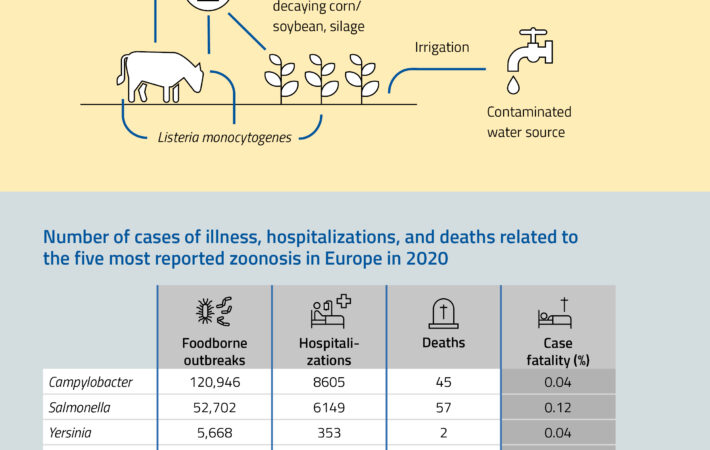
Recent news in Food & Feed Analysis
- Home
- /
- Keeping an eye on...
Keeping an eye on Listeria – Identifying risks, ensuring safety

Listeria – a serious challenge in food production.
Listeria, especially Listeria monocytogenes, are rod-shaped, pathogenic bacteria that are widespread in the environment – found in soil, water, plants, and animals.
Whether cheese, meat and fish products, or ready-to-eat foods – Listeria can infiltrate food production through raw materials, personnel, or equipment. They survive in cold storage, on production lines, and in biofilms. This invisible threat often hides in hygiene weak spots and poses ongoing challenges for manufacturers and testing laboratories.
Ready-to-eat (RTE) foods are particularly at risk, as they are consumed without further heating – e.g., smoked fish, deli salads, raw milk cheese, or pre-cut fruits and vegetables.
Why are Listeria so critical?
Listeria monocytogenes can survive refrigeration and multiply in processed foods. It poses a serious health risk, especially to pregnant women, the elderly, and immunocompromised individuals – potentially leading to severe illness or listeriosis.
Listeria monocytogenes – Key Facts at a Glance
- Growth from: −0.4 °C – active even in refrigeration
- pH tolerance: 4.6 to 9.5
- Salt resistance: up to 20%
- Water activity: growth possible at aW < 0.90
- Special trait: forms biofilms – difficult to remove
In addition to pathogenic L. monocytogenes, other Listeria spp. species serve as hygiene indicators and signal potential contamination risks.
Common Sources and Contamination Pathways
- Raw materials (e.g., meat, fish, vegetables)
- Production environment (drains, machinery, cutting tools)
- Gaps in personal hygiene and cleaning
- Cold storage with biofilm formation
Why Regular Testing Is Essential
- Ensure safety: Detect L. monocytogenes and Listeria spp. in products and the environment
- Pass audits: Use of validated methods
- Enable traceability: Early detection prevents escalation
- Evaluate hygiene: Listeria spp. indicate weaknesses in hygiene management
Why Detection Matters – and How Real-Time PCR Helps
Traditional culture methods take several days to deliver results. In contrast, real-time PCR systems provide results within hours (after enrichment), enabling faster decisions in quality control and product release.
Benefits of SureFast® Listeria 3plex ONE Real-Time PCR
- High sensitivity and specificity
- Simultaneous detection of L. monocytogenes and Listeria spp. in one workflow
- Faster response to contamination
- Reproducible, standardized results
- Ideal for routine testing, hygiene monitoring, and product release
Partnering Against Listeria – How We Support You
We offer an AOAC and MicroVal certified real-time PCR kit for the simultaneous detection of Listeria spp. and L. monocytogenes – validated according to ISO 16140-2. Whether in your in-house lab or through partner labs – our system is easy to integrate.
Learn more:
Product info about SureFast® Listeria 3plex ONE
Get in touch – together we protect your production and your brand.

